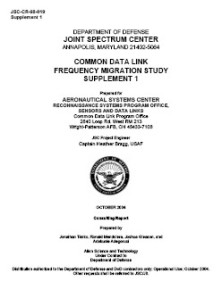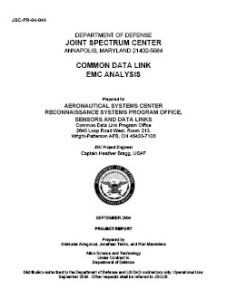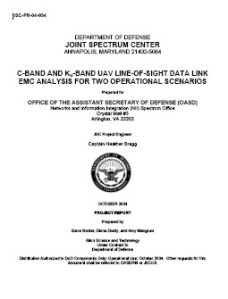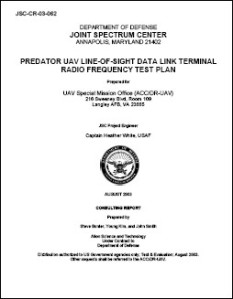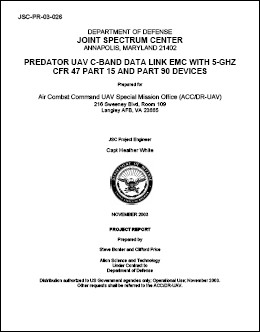Whistleblower Reveals Surveillance Target In an exclusive interview on MSNBC’s “Countdown with Keith Olbermann,” former NSA analyst Russell Tice says that the agency under the Bush administration secretly collected communications data on civilians, including journalists.
Video – Countdown video : Whistleblower reveals surveillance target
Following is a transcript of interview:
OLBERMANN: It has taken less than 24 hours after the Bush presidency ended for a former analyst at the National Security Agency to come forward to reveal new allegations about how this nation was spied on by its own government, exclusively here on COUNTDOWN.
Our third story tonight, Russell Tice has already stood up for truth before this evening as one source for the revelation in 2005 by the “New York Times” that President Bush was eavesdropping on American citizens without warrants. Tonight, the next chapter for Mr. Tice, a chapter he feared to reveal while George Bush occupied the Oval Office, that under the collar of fighting terrorism, the Bush administration was also targeting specific groups of Americans for surveillance, non-terrorist Americans if you will.
Mr. Tice prepared to name one of those groups tonight. The NSA was already estimated to have collected millions of transmissions, e-mails and phone calls of average Americans simply by patching into the networks of cooperative telecommunications companies. You will recall the infamous room 641A at the AT&T Folsom Street facility in San Francisco, in which the whole of AT&T’s portion of the Internet was duplicated inside a room accessible only to the NSA.
Mr. Tice, however, was also involved in another program and told us that he was first directed to focus on these specific groups in order to weed them out from legitimate surveillance targets, but ultimately concluded that the weeding out was actually an internal NSA cover story for a real goal, which was simply spying on those Americans.
Initially, Mr. Bush told the nation all his surveillance was legal.
(BEGIN VIDEO CLIP)
GEORGE W. BUSH, FORMER PRESIDENT OF THE UNITED STATES: Anytime you hear the United States government talking about wiretap, it requires a
— a wiretap requires a court order.
(END VIDEO CLIP)
OLBERMANN: After the “New York Times” revealed that to be a lie, Mr. Bush claimed his surveillance circumvented the constitutionally required process of obtaining a court-ordered warrant only in cases of clear links to terrorism.
(BEGIN VIDEO CLIP)
BUSH: In the weeks following the terrorist attacks on our nation, I authorized the National Security Agency, consistent with U.S. law and the Constitution, to intercept the international communications of people with known links to al Qaeda and related terrorist organizations.
Before we intercept these communications, the government must have information that establishes a clear link to these terrorist networks.
(END VIDEO CLIP)
OLBERMANN: Joining me now in his first public revelation of these charges is Russell Tice, former analyst with the National Security Agency. Thank you for your time, sir.
RUSSELL TICE, FORMER ANALYST, NSA: Thanks for having me.
OLBERMANN: Let’s start with the review. We heard the remarks from Mr. Bush in 2005, that only Americans who would have been eavesdropped on without a warrant were those who were talking to terrorists overseas. Based on what you know, what you have seen firsthand and what you have encountered in your experience, how much of that statement was true?
TICE: Well, I don’t know what our former president knew or didn’t know. I’m sort of down in the weeds. But the National Security Agency had access to all Americans’ communications, faxes, phone calls, and their computer communications. And that doesn’t — it didn’t matter whether you were in Kansas, you know, in the middle of the country, and you never made a communication — foreign communications at all. They monitored all communications.
OLBERMANN: To what degree is that likely to mean actual eavesdropping and actual inspection? In other words, if not actually read or monitored by the NSA, everything was collected by the NSA, recorded, archived? Do you have any idea to what degree the information was ever looked at, per se?
TICE: Well, it’s actually, even for the NSA, it’s impossible to literally collect all communications. Americans tend to be a chatty group. We have the best computers at the agency, but certainly not that good.
But what was done was a sort of an ability to look at the meta data, the signaling data for communications, and ferret that information to determine what communications would ultimately be collected. Basically, filtering out sort of like sweeping everything with that meta data, and then cutting down ultimately what you are going to look at and what is going to be collected, and in the long run have an analyst look at, you know, needles in a haystack for what might be of interest.
OLBERMANN: I mention that you say specific groups were targeted.
What group or groups can you tell us about?
TICE: Well, there’s sort of two avenues to look at this. What I just mentioned was sort of the low-tech dragnet look at this. The things that I specifically were involved with were more on the high-tech side. And try to envision, you know, the dragnets are out there, collecting all the fish and then ferreting out what they may. And my technical angle was to try to harpoon fish from an airplane kind of thing. So it’s two separate worlds.
But in the world that I was in, as to not harpoon the wrong people in some — in one of the operations that I was in, we looked at organizations just supposedly so that we would not target them. So that we knew where they were, so as not to have a problem with them.
Now, what I was finding out, though, is that the collection on those organizations was 24/7, and you know, 365 days a year, and it made no sense. And that’s — I started to investigate that. That’s about the time when they came after me, to fire me. But an organization that was collected on were U.S. news organizations and reporters and journalists.
OLBERMANN: To what purpose? I mean, is there a file somewhere full of every e-mail sent by all the reporters at the “New York Times?” Is there a recording somewhere of every conversation I had with my little nephew in upstate New York? Is it like that?
TICE: If it was involved in this specific avenue of collection, it would be everything. Yes. It would be everything.
OLBERMANN: Do you have a sense of why, as you discovered this? I mean, do you have a sense of what this was, if it was used, to what end?
TICE: I do not know. I do not know what was done with the collection. I’m sure the information — the collection was digitized and put on databases somewhere. I don’t know what was done with it from that point.
OLBERMANN: And this bait-and-switch sort of idea, that this — this is the discard pile, we are not going to look at the media, and then it becomes apparent to you that the discard pile is in fact the save pile.
How did that become apparent to you?
TICE: Well, as I was going for support for this particular organization, it sort of was dropped to me that, you know, this is 24/7. Because I was saying, you know, I need collection at this time, at this point for, you know, for a window of time. And I would say, will we have the capability at this particular point? And positioning assets, and I was ultimately told we don’t have to worry about that, because we’ve got it covered all the time. And that’s when it clicked in my head, this is not something that’s being done on a onesy basis, onesy-twosie. This is something that’s happening all the time.
OLBERMANN: In a broad sense, and I imagine this question could be asked a hundred times with much more specificity, but what other kinds of information are you aware of that was collected by the NSA on ordinary Americans?
TICE: On ordinary Americans? I don’t know. The parameters that were set for how to filter that — now we are back to the low-tech side
— were things like looking for parameters like if a terrorist normally would only make a phone call for one or two minutes, then you look for communications that are only one or two minutes long. Now, that also could be someone ordering a pizza and asking their significant other what sort of toppings that they wanted on their pizza. That is about a
one- to two-minute phone call.
OLBERMANN: We mentioned this idea of bait-and-switch, of this is the discard, no, it’s not; this is actually the target. Can you explain the maneuver, another sort of bait-and-switch that was worked with the congressional committees that would have had to be asking questions about stuff exactly like this?
TICE: Well, the agency would tailor some of their briefings to try to be deceptive for — whether it be, you know, a congressional committee or someone they really didn’t want to know exactly what was going on. So there would be a lot of bells and whistles in a briefing, and quite often, you know, the meat of the briefing was deceptive.
One of the things that could be done was you could take something that was part of the Department of Defense, make it part of the intelligence community, and put a caveat to that, and make that whatever the intelligence community is doing for support will ultimately be given a different caveat. So when the defense committees on the Hill come calling, you say, you can’t look at that because that’s an intelligence program.
OLBERMANN: Right.
TICE: But when the intelligence program comes calling, you say you can’t look at that because it is a Department of Defense program.
OLBERMANN: Right.
TICE: So you basically have a little shell game that you are playing back and forth.
OLBERMANN: It’s brilliant in its simplicity. It’s wonderful in its simplicity in a different context.
Last question here, what happens now? Can the Obama administration stop this? That is the first part. And, secondly, has anybody from the Obama administration been in touch with you about this?
TICE: No. Well, I’ve been in touch with — basically, I volunteered for the Obama administration to act as a, you know, if they needed a consultant for intelligence. And this was last February. And they said they knew who I was, you know, my background with the agency, but they never really utilized me. I helped out as a volunteer yesterday in the inauguration, but certainly not in that capacity.
OLBERMANN: Right.
TICE: So, you know, I even said I would go on camera for them if they wanted a commercial, but they really didn’t utilize that.
But I did send a letter to — I think it’s Mr. Brennan — a handwritten letter, because I knew all my communications were tapped — my phones, my computer, and I have had the FBI on me sort of like flies on you know what. And so I made sure it was handwritten. And I’m assuming that he gave the note to our current president, that I intended to say a little bit more than I had in the past.
OLBERMANN: And you have done that. I think, if it’s all right with you, I think we are going to have to do another interview tomorrow.
TICE: Certainly.
OLBERMANN: There is much — there are only about twice as many questions left.
Russell Tice, former NSA intelligence analyst. It sounds corny, thank you for doing this for the country.
TICE: Well, you know, I raised my hand, just like the president, and my oath was to support and defend the Constitution, not a director of an agency, not a classification on a piece of paper, but ultimately the Constitution. And these things were against the law that were happening. So I was just doing my job, really.
OLBERMANN: Well, yes, but doing your job sometimes earns you the lapel pin, the flag pin. Thank you, sir.
TICE: Thank you.




